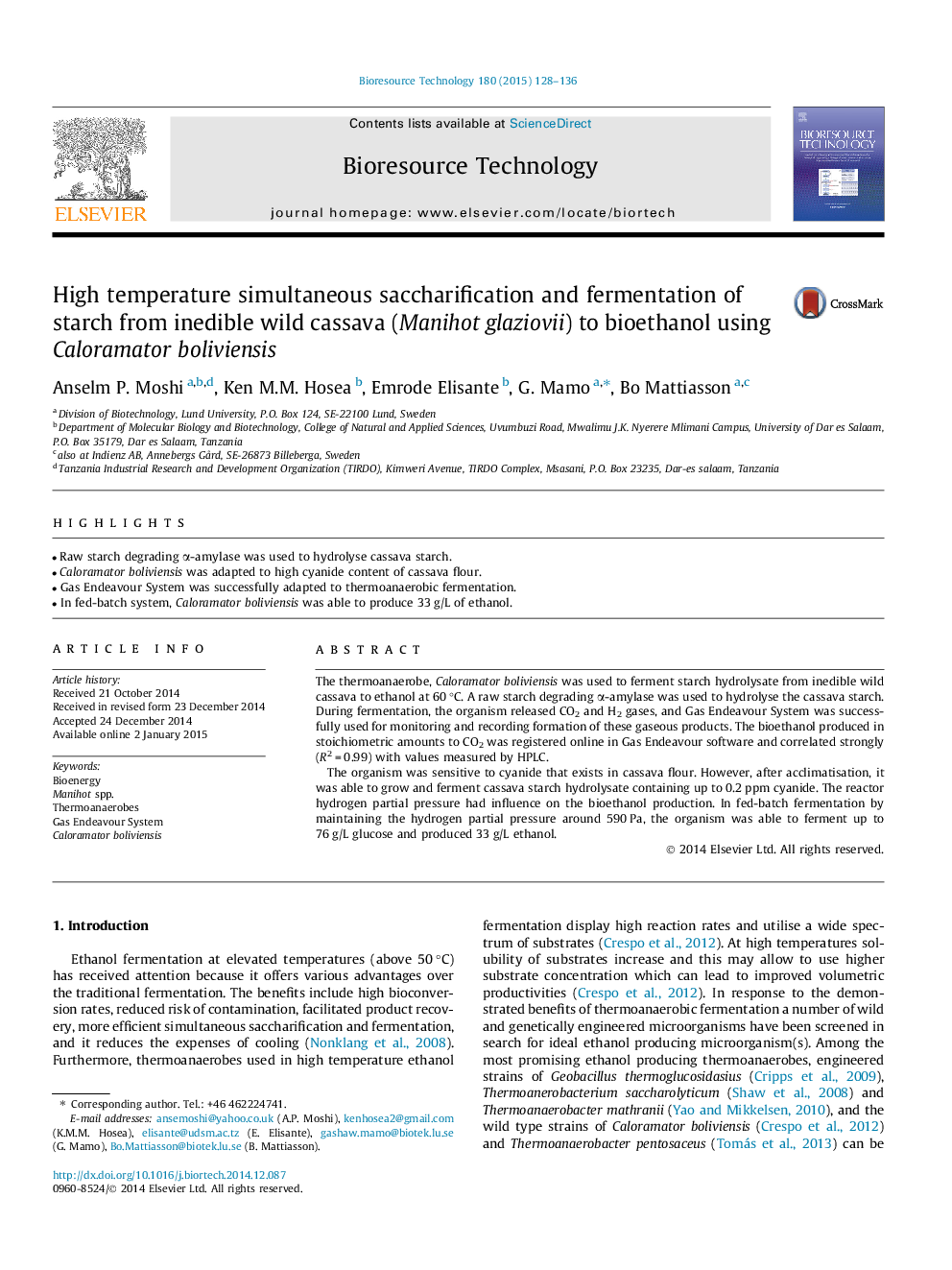| کد مقاله | کد نشریه | سال انتشار | مقاله انگلیسی | نسخه تمام متن |
|---|---|---|---|---|
| 680024 | 1459963 | 2015 | 9 صفحه PDF | دانلود رایگان |

• Raw starch degrading α-amylase was used to hydrolyse cassava starch.
• Caloramator boliviensis was adapted to high cyanide content of cassava flour.
• Gas Endeavour System was successfully adapted to thermoanaerobic fermentation.
• In fed-batch system, Caloramator boliviensis was able to produce 33 g/L of ethanol.
The thermoanaerobe, Caloramator boliviensis was used to ferment starch hydrolysate from inedible wild cassava to ethanol at 60 °C. A raw starch degrading α-amylase was used to hydrolyse the cassava starch. During fermentation, the organism released CO2 and H2 gases, and Gas Endeavour System was successfully used for monitoring and recording formation of these gaseous products. The bioethanol produced in stoichiometric amounts to CO2 was registered online in Gas Endeavour software and correlated strongly (R2 = 0.99) with values measured by HPLC.The organism was sensitive to cyanide that exists in cassava flour. However, after acclimatisation, it was able to grow and ferment cassava starch hydrolysate containing up to 0.2 ppm cyanide. The reactor hydrogen partial pressure had influence on the bioethanol production. In fed-batch fermentation by maintaining the hydrogen partial pressure around 590 Pa, the organism was able to ferment up to 76 g/L glucose and produced 33 g/L ethanol.
Journal: Bioresource Technology - Volume 180, March 2015, Pages 128–136